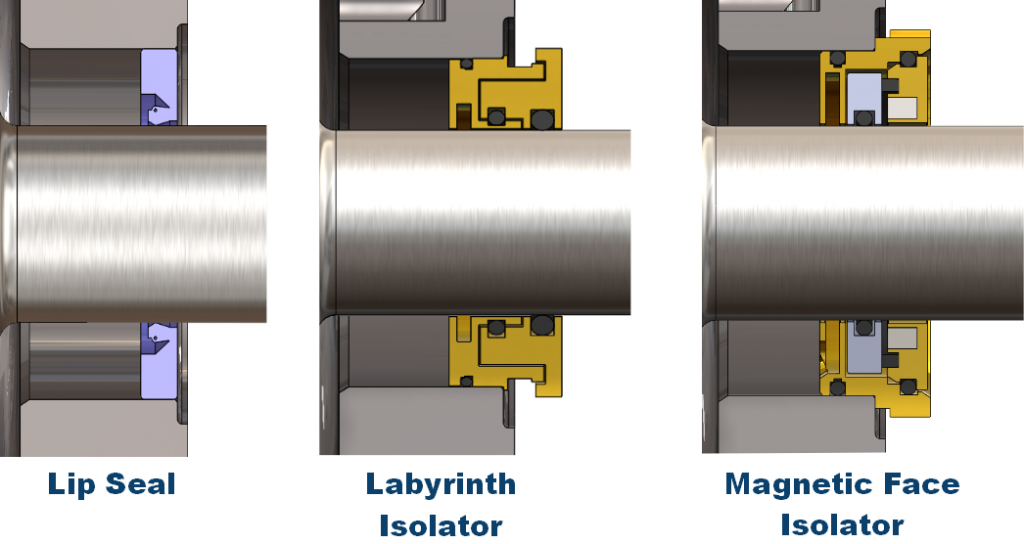Bearings are to pumps as tires are to cars. Experience a flat tire and within minutes your travel is interrupted, the vehicle is stopped, time and money are spent replacing the flat. If the bearings fail on a process centrifugal pump, production is interrupted, the equipment is shut down, time and money are spent replacing the bearings. Considering that bearing failure is one of the leading causes of pump downtime, choosing the correct protection for the bearings on your process equipment is a “Maintenance First” qualifier.
This article will cover general specifications that should be considered when choosing a device for bearing protection on rotating equipment. Figure 1 below shows three common examples of such devices.
Figure 1: Common types of bearing isolators/seals
The first and most basic device for protecting bearings is the lip seal. Lip seals have been around since the 1920’s and are still one of the most common oil seals found in the field today. Unfortunately, lip seal technology is outdated, and these types of devices have some major flaws. One of these flaws is causing wear on shafts. The seal remains stationary as the shaft rotates beneath it, and the contact between them causes rubbing. This constant rubbing on the shaft leads to wear on both the seal and shaft, which eventually leaves a groove (fretting) on the shaft surface that can create a leak path.
In response to the wearing issue with lip seals, a new technology was born – the bearing isolator. The isolator first took form as a stationary Labyrinth and has evolved into today’s dual Labyrinth. Labyrinths establish a restrictive oil path (or maze) to make it difficult for oil to leak out. Dual Labyrinths contain two main components: a stationary and rotor. The stationary fits the housing while the rotor fits the shaft and rotates with it. This eliminates wear on the shaft. While labyrinth isolators are effective in many applications, they have limitations of their own. One of which is the inability to seal in flooded, vertical down, and oil mist applications. In these scenarios, the oil will inevitably solve the Labyrinth’s maze and leak out through the oil path.
As time went on, the bearing isolator continued to evolve…adapting to the need for complete protection in all applications. This evolution lead ISOMAG to the latest isolator technology on the market today – the magnetic face seal. Similar to concepts driving mechanical seals, magnetic face seals utilize lapped flat faces held together by magnetic force rather than mechanical energy to create a positive seal. This positive seal eliminates leakage in applications where Labyrinths cannot (flooded, vertical down, and oil mist). Similar to Labyrinth seals, magnetic face seals contain a stationary assembly and rotor to ensure no wear to the shaft surface. In this device’s case, however, the rotor is held to a stationary face by a magnetic force, resulting in a positive seal for liquids.
Below is a Quick Reference Chart of general specifications for bearing isolators/seals. Passing all specifications is not necessary for all applications; it will be up to the equipment manufacturer or end user to decide which isolator to apply. Based on the applicable specifications, an appropriate bearing protection device can be chosen.
Please note the use of the words “Perform reliably” in many of the guidelines is defined by the following: To perform reliably means that for a minimum runtime of 5 years, all leakage and/or bearing contamination is eliminated.






